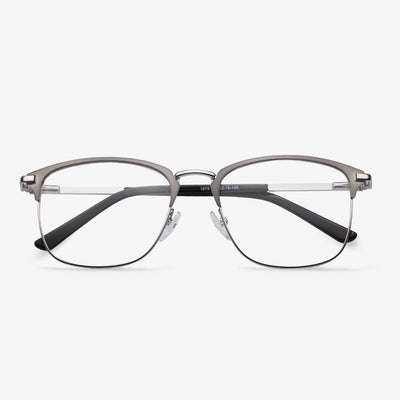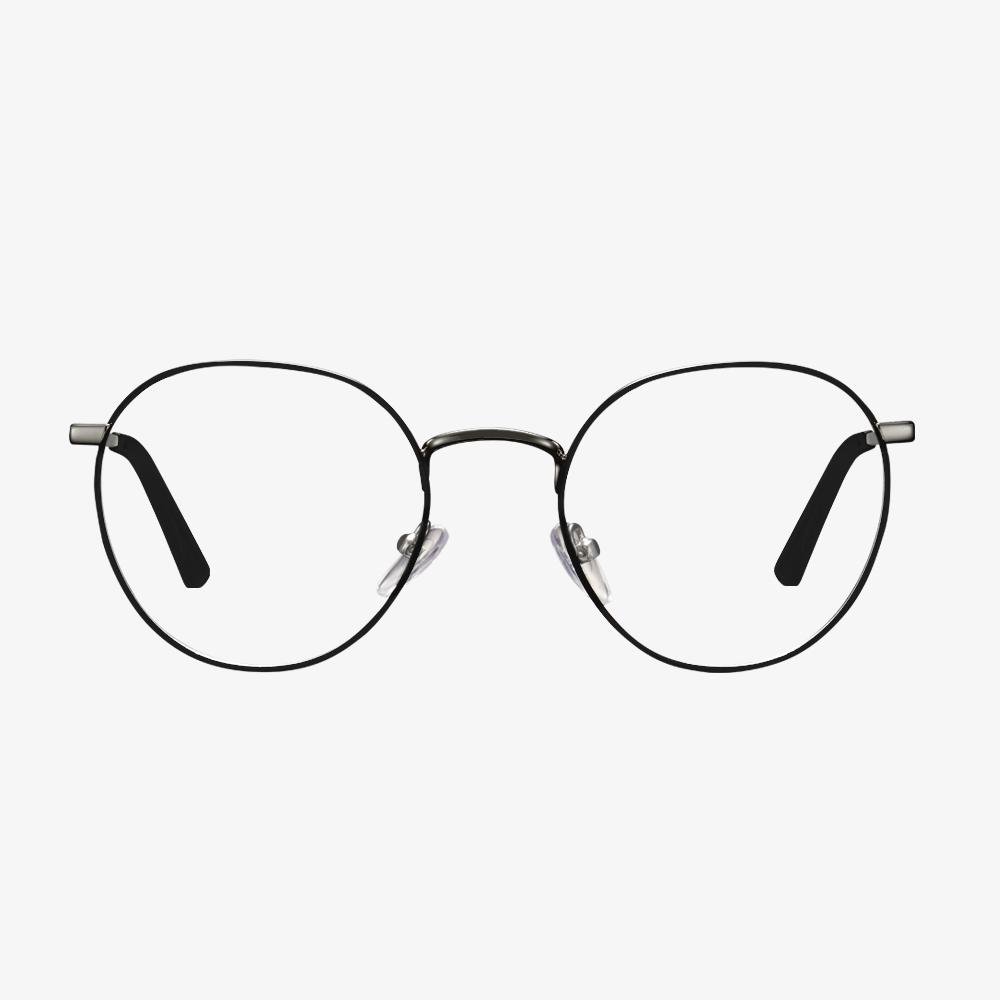How to know your face shape to choose glasses?
To determine your face shape and spectacle styles that will look best on you, pull your hair away from your face and look directly into a mirror. Look closely at your face and head. You need to measure your forehead width, cheekbone width, jawline width and face length.
After measuring, you need to consider your facial features. There are a few characteristics tied to specific face shapes. For example, a rounder jawline is typically tied to a rounder face shape, a pointed chin is closely related to a heart-shaped face. And you need to take note of the angles and contours of your face to see they are soft or sharp or pronounced or not.
Then you can check whether you have a round shape face, squared face or others.
Round face shape: the forehead round at the hairline; the width of your face is the same as the length; the jawline round with very subtle angles, and the length of your face is the same as the width.
Square face shape: the hairline follows a straight line; there are minimal curves to your cheekbones; you would have a strong and squared jawline.
Diamond face shape: the width of your face is smaller than the width of your cheekbones; the cheekbones significantly wider than your forehead and jawline; you may have a narrow chin area; the length of your face is the same as the width.
There are also other face shapes. You can click here to know more.
What Are the Advantages of High-Index Lenses?
In this section, we will show you the advantages of high-index lenses.
- Thanks to the slim shape and narrow edges, high index lenses offer wearers the flexibility to choose from a wide array of fashion-forward frames. Their size means that they can be easily paired with sleek metal frames or incorporated into rimless eyewear for an attractive barely-there look.
- High index lenses are more comfortable for extended use because they are lighter than the traditional counterparts.
- High index lenses are available with many of the same options as traditional lenses. For example, they can be either single-vision or progressive.
- For users with strong prescriptions, high index lenses mean no bulky, bottle-glasses appearance. This can reduce the unwanted bug-eye look traditionally associated with very thick lenses.
However, there are some negative voices of high index lenses.
The origin of aspheric lens
The Visby glasses, unearthed in Gotland, Sweden, are the earliest aspheric lens found. The Vikings in the 11th century used it as a magnifying glass, and some of the best ones were made of silver, making them look like handicrafts. In 1667, Francis Smethwick grinds the first high-quality aspheric lenses and presents them to the Royal Society. That's a telescope with three aspheric elements. In 1956, Elgeet, which originally designed and manufactured optical instruments for the U.S. Navy, produced the world's first mass-produced aspheric lens for photography (Golden Navitar 12mm F1.2) for a 16mm film machine. Today, aspheric lenses are found in everything from tall telescopes to missile guidance systems to camera lenses. In the glasses we wear, the aspheric lens is familiar to consumers.
Optometry for prescription glasses
The key prerequisite for proper glasses is accurate optometry. In foreign countries, professional optometrists are generally required to be qualified to issue prescriptions for optometry. However, this is not very standardized in China. Many optometrists have only been trained for a short period of time and do not have the basic knowledge of ophthalmology. For some complex situations, they may not give a proper prescription for glasses. Therefore, optometry should choose a qualified institution. If you are adolescents, people with high myopia, people with anisometropia, etc., you may need to dilate your pupils for optometry. It is best to go to the optometry center of the hospital for optometry
Sports goggles
With the improvement of people's sports concept and sports protection concept, sports goggles are also widely welcomed. Safety glasses are worn during sports must have four major functions, safety (PC lenses), protection (TR-90 frame, soft and flexible), comfortable (non-slip nose pads and foot covers), and beauty (match sports and leisure clothing).
Sports goggles with shatter-resistant plastic lenses and side shields can prevent balls or sand from hitting the eyes. It can be fixed on the head without worrying about falling off during intense movements. The unique design of the rim of the frame makes the glasses very close to the human face and has a proper external isolation effect so that the human eye is not easy to be attacked by bacteria. The special lens has the functions of anti-fog, anti-shock, and ultraviolet rays, which is very suitable for outdoor activities.
What is the best lens material?
The world's first resin lens was made of CR-39 material, and CR-39 is still the main optical lens material in Europe and the United States. After the end of World War II, people found that compared with glass, the main lens material at that time, the light transmittance of CR-39 is high, and it can block ultraviolet light. In addition, CR-39 can be dyed, not easy to fog, and has small dispersion (CR-39's Abbe number is 58) and other benefits.
Progressive Lens
Standard progressive lenses are multifocal lenses with three observation areas, farsightedness, intermediate vision, and nearsightedness. Unlike bifocals, there are no visible lines between each viewing area. They have a seamless, invisible design, where the optical power changes 'gradually' throughout the lens. Many people confuse 'bifocal' or 'trifocal' with 'progressive' but remember that bifocals and trifocals have visible lines in the lens, while progressive lenses do not. Because progressive lenses have no lines in the lens, they are more popular multifocal lenses than bifocal lenses.
The main observation area of the progressive lens is a far distance, the smaller area at the bottom of the lens is used for myopia, and the middle area in the middle is smaller. Standard progressive glasses are very suitable for general purpose glasses, focusing on hyperopia activities (such as driving and walking) and sufficient area in the lenses for nearsighted activities (such as reading and computer use). The left and right sides or 'convex corners' of the lens are deliberately blurred to achieve an invisible design. The clearest line of sight in the gradual process is from the center to the top of the lens.


















































